A postcard adventure that I have dubbed “Postcard Genealogy” is something I particularly like. The process begins when you discover a postcard addressed to someone noteworthy. There is a high degree of serendipity involved because it takes time to research names and addresses of people about whom you know nothing except that they received a postcard more than 100 years ago.
The card below is such a find. It is an advertisement for a performance of The Merry Widow on Friday, September 17, 1909, at the Opera House in Newport, Rhode Island.
The image on the right is not a postcard. It is a photograph of the person to whom the postcard is addressed. The gentleman is Rear Admiral Cameron McRae Winslow. He likely received the card on September 12, 1909, at his home in Newport, Rhode Island.
The Admiral
Cam Winslow was born in Washington, DC. He was the son of U.S. Navy Commander Francis Winslow (who died while in Naval service) and Mary Sophia Nelson. Cameron had one younger sister and one younger brother. When he married in September 1899 it was Theodora Havemeyer who became his bride. The couple was forbidden a church wedding because the Havemeyers were Catholic and the Winslows were Protestant, yet the wedding was reputed to have been the marriage of the year. Cameron and Theodora had six children, among them were: Cameron, Jr. (also a successful U.S. Navy officer), Theodora Marie (who lived to be 103), and Arthur (Captain of the racing schooner Narcissus). The entire family – the admiral’s parents, his wife and their children are buried in the Stark Cemetery in Dunbarton Center, New Hampshire.
The admiral had an amazing career. He was “there” for many notable events during his distinguished career in the service of his country. He graduated with high honors from the United States Naval Academy in the class of 1875. (In the Academy’s Gradebook for May 1874, Midshipman Winslow ranked 3rd in his class of 37. Two significant grades he earned were a 9 out of 9 in fencing and 24 out of 24 in Seamanship – perfect scores, but in conduct he earned only 104 out of 120.) He served on the last voyage of the frigate U.S. Constitution in 1878. In the Spanish-American War he was wounded on May 11, 1898, while in command of the cable cutting expedition at Cienfuegos, and was advanced in rank for extraordinary heroism. He was Commander in Chief of the Pacific Fleet with the rank of Admiral in 1915-1916. Upon his return from the South Pacific at age 60 and on the verge of retirement, he was asked to join the faculty of the United States Naval Training Center’s War College in Newport, Rhode Island, then in 1916 was called to active duty for the duration of the first World War.
Rear Admiral Winslow was a first cousin once removed of Rear Admiral John A. Winslow, who served in the Civil War Navy and is best known as the commanding officer of USS Kearsarge which defeated and sunk CSS Alabama off the coast of France during that war.
The admiral died on January 2, 1932, at age 77.
The U.S. Winslow (DD-359) commissioned in 1937 was named in honor of him.
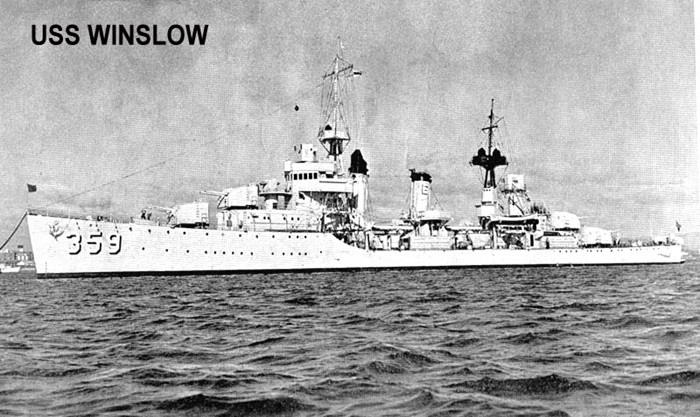
***
The Postcards
It may be that postcards were the most effective means of advertising theatre in the early twentieth century. In one collection that was started around 1990, at last count, there are 41 cards with a “Merry Widow” theme. Seven of those cards are a “Day-of-the-Week” set.
The producer of the Rhode Island performance was the, much later renowned, Henry W. Savage who had made and lost fortunes in the real estate markets of New York and Boston. Producing and managing theatre was, as they say, his second career and this production of The Merry Widow was one of his first ventures into the arts.
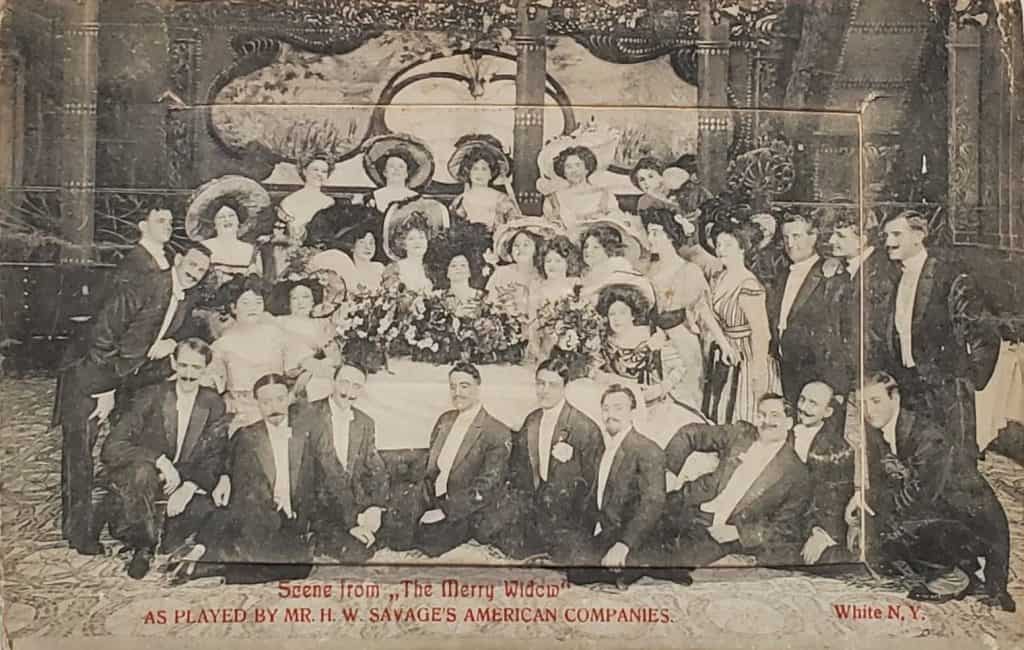
The “waltz” card above has been found (so far) with five different dates and locations: The Opera House in Newport, Rhode Island; the Nixon Theatre in Pittsburgh, Pennsylvania; the Colonial Theatre in Chicago, Illinois; the McDonough Theater in Oakland, California; and the Forrest Theatre in Philadelphia.
The “cast” card is from a New York production. It is a fold-out card with seven scenes from the show. The 14 men and 17 women in the photo make up the fifteen-character cast and the sixteen-voice chorus.
The Composer
Franz Lehár was already an accomplished, Austrian composer, when he won a commission to write a new operetta for the prestigious New Theatre of Vienna. The working title of the new work was The Embassy Attaché from a play by the Frenchman Henri Meilhac, and that became The Merry Widow.
Working with a fellow Austrian, Leo Stein, the playwright, not the Leo Stein who was the art collector from Pennsylvania and brother of Gertrude Stein, Lehár suggested a partnership with Victor Léon, a Hungarian novelist to write the libretto. The operetta premiered on December 30, 1905, and was an instant success with audiences and critics.
As early as 1908, the production made its way to America and became a wildly popular musical. It was among the best of the 20th century and is still performed by both professional and amateur opera companies.
The Merry Widow
The story of The Merry Widow is fiction set in the country of Pontevedro. As a romantic comedy it is formulaic. It revolves around a wealthy widow, Hanna Glawari, who is being courted by suitors who are anxious to inherit her vast fortune. The Pontevedrian government is concerned because they want to keep her money in the country to avoid bankruptcy.
The scheme to keep the country solvent starts with a handsome and charming young nobleman, named Danilo Danilovitch. He is an ideal candidate to win Hanna’s affections and secure her fortune, but the pair shares a complicated romantic history that makes it difficult for them to express their true feelings. Throughout the operetta, misunderstandings and comedic situations arise as Danilo and Hanna navigate their relationship.
Lehár was much admired for his lush melodies, and he spared “nary-a-note” as he created the everlasting Merry Widow Waltz and arias such as Vilja Song. [Vilja was a “witch of the wood” so beautiful that she cast a spell on any hunter who saw her.] The Vilja song was the personification of Lehár’s use of glorious orchestration and elegant vocalization throughout the opera.
The colorful cast of characters written into the storyline are so endearing. They include the bumbling Baron Zeta, the flirtatious Valencienne, and the dashing Camille de Rosillon, who add depth, variety, and humor to the performance.
The history of The Merry Widow continues, even into the first decade of this the 21st century. It has been sung by some of the most notable singers of the age, including Beverly Sills, Joan Sutherland, and Anna Netrebko. The fact that the scope of performances has broadened for new audiences and that translations into more than twenty languages have made that possible. The adaptation and transcription into a screenplay have also brought a renewed recognition for Franz Lehár.
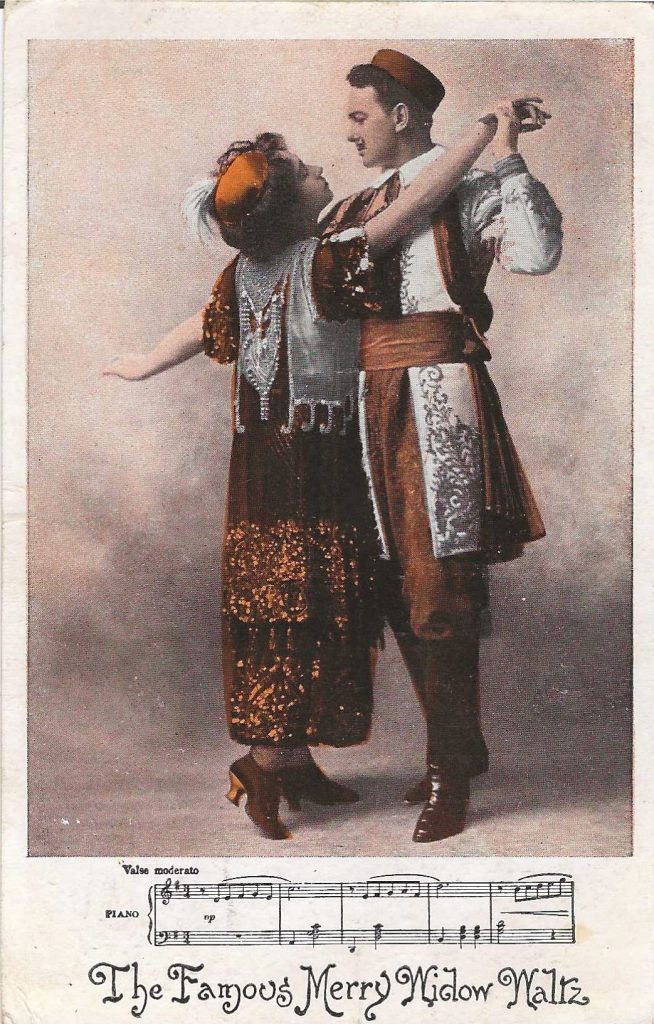
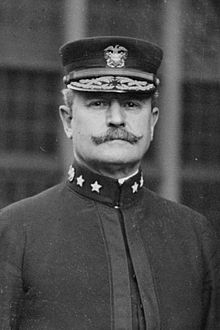
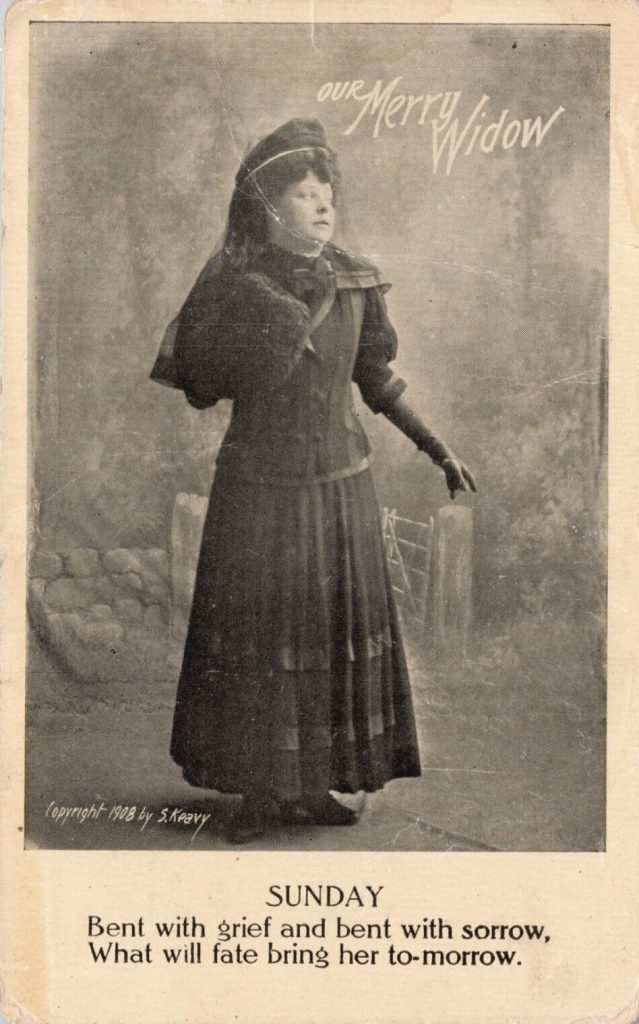
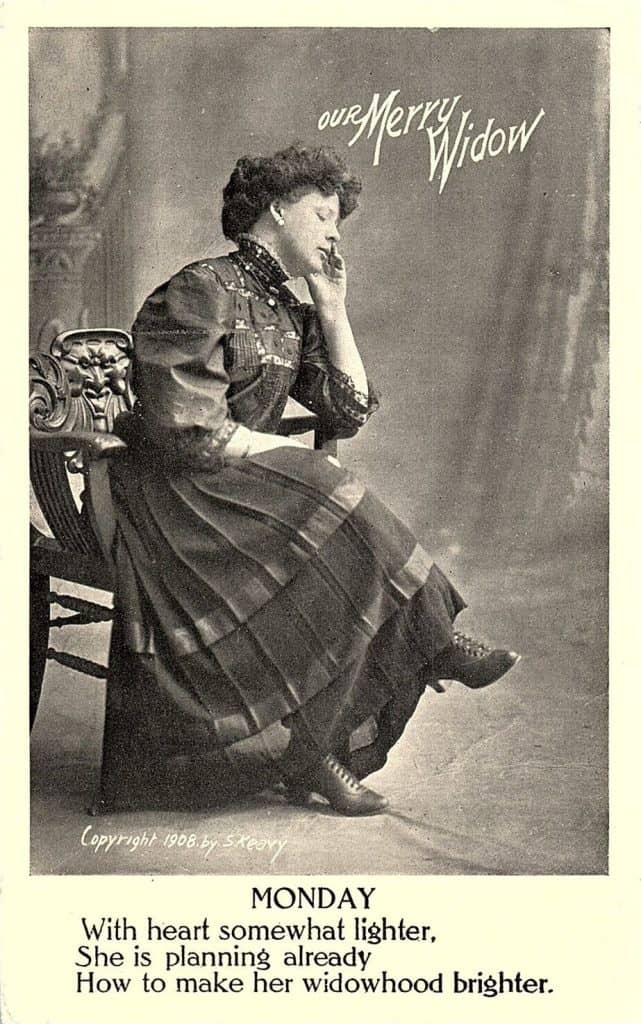
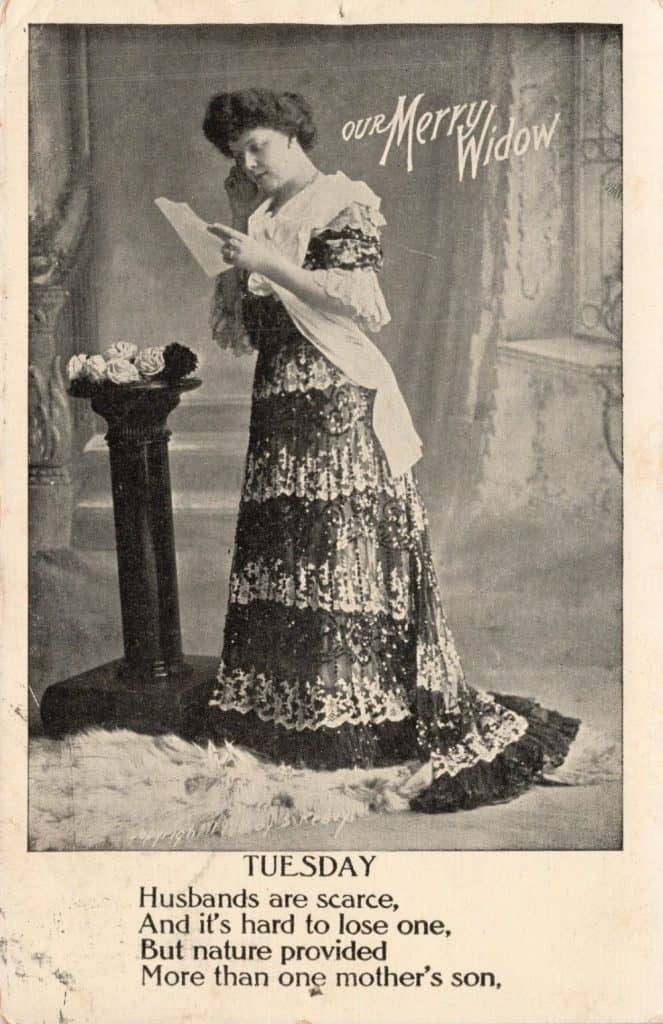
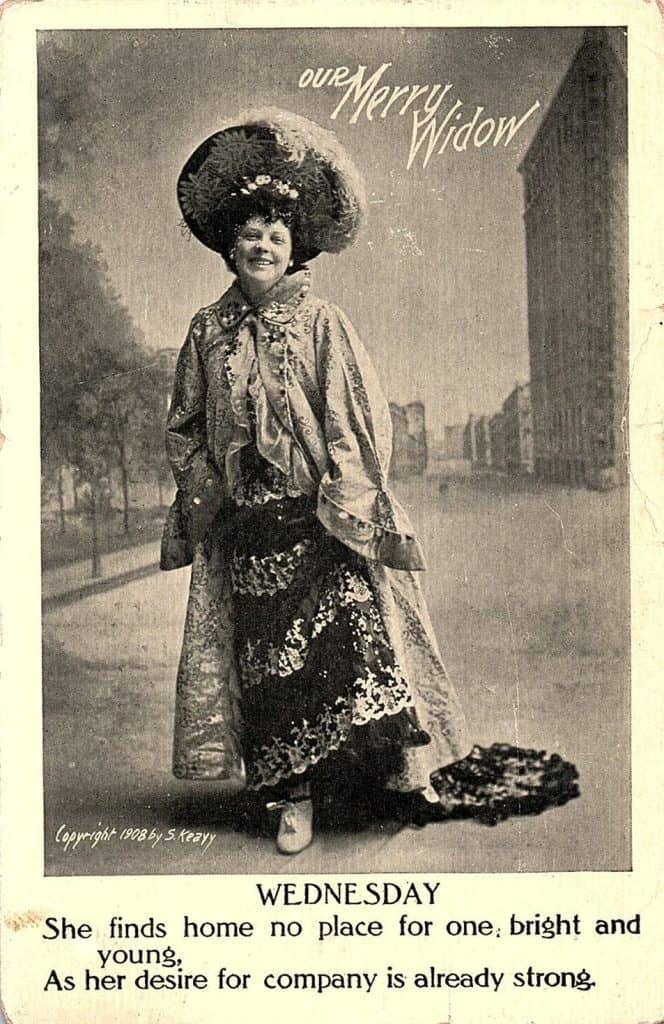
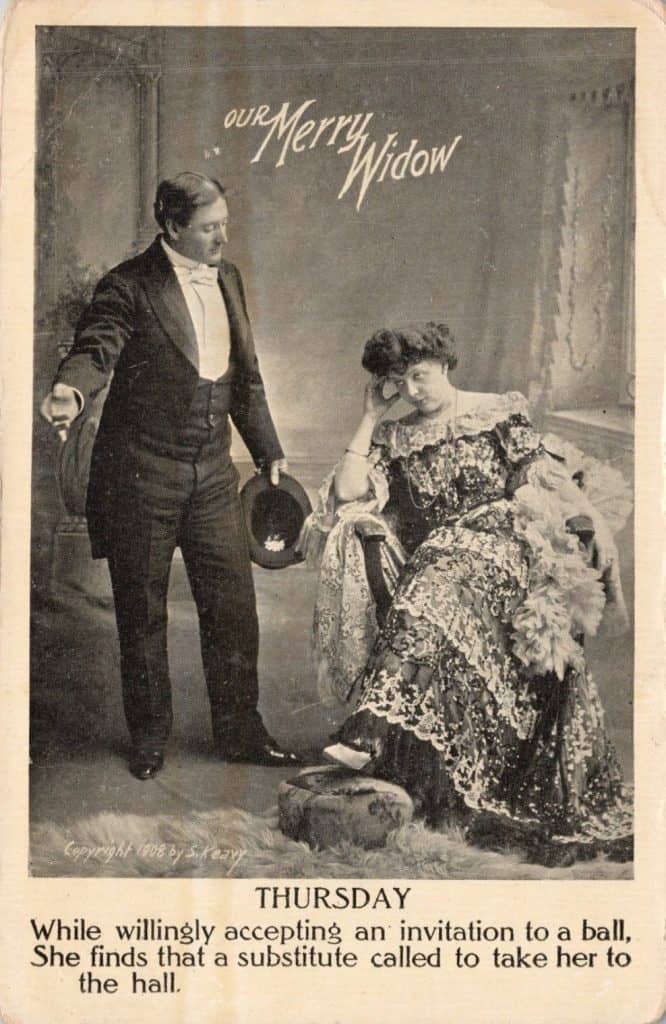
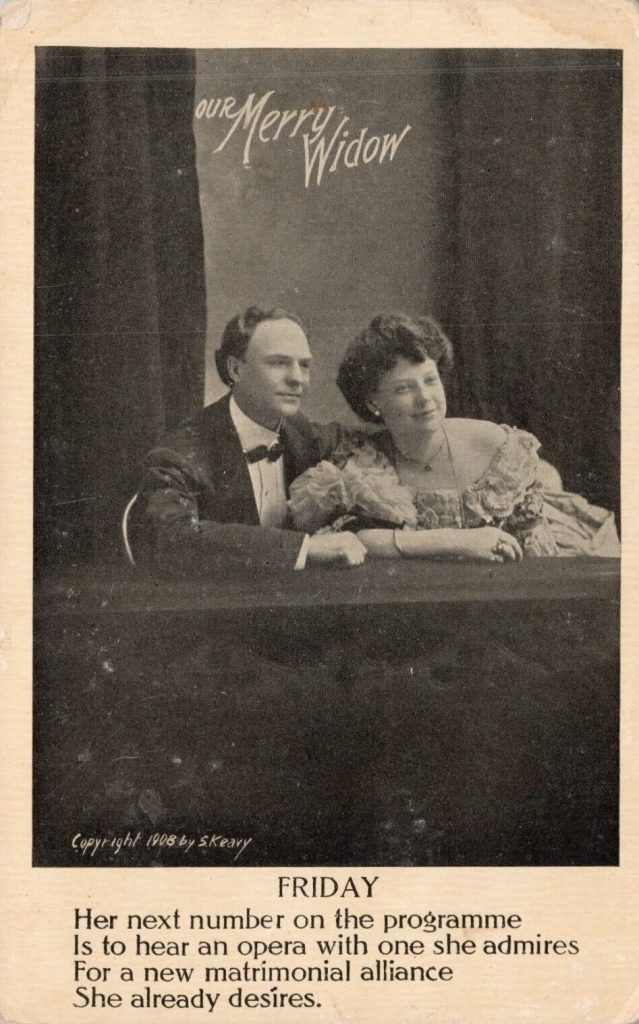
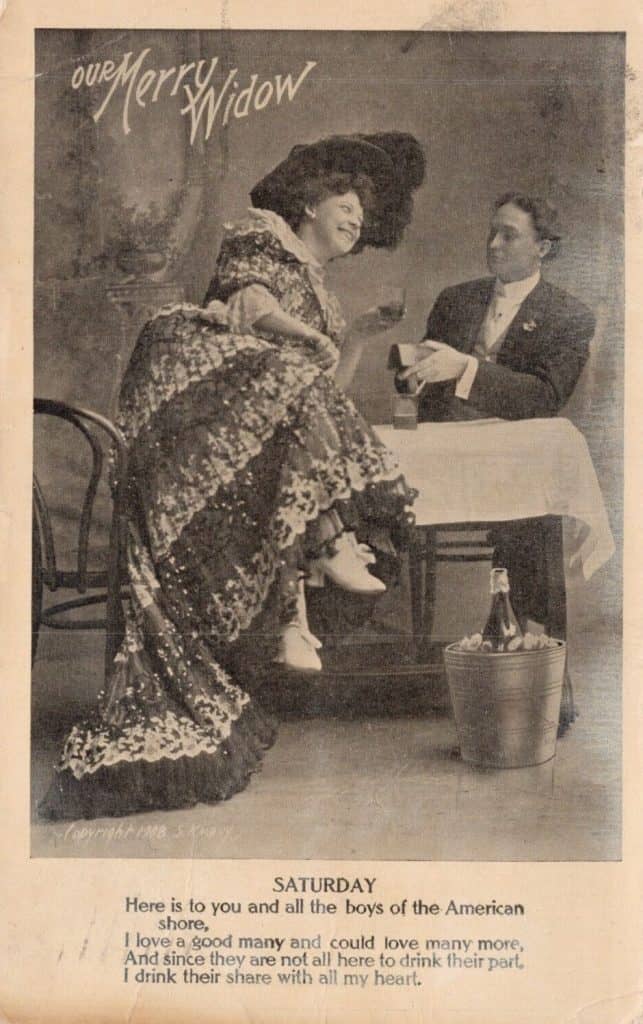
Great information on Admiral Winslow. What a lucky find to have a postcard addressed to such a historic figure. I hope that he was able to go to and enjoy the show!.
A U.S. special delivery stamp (Scott #E7) is known as the “Merry Widow” because the Helmet of Mercury featured in the design bears a resemblance to the “Merry Widow” hat.
Thank you for such a lovely information!